In honour of The Hutong’s Ten Year Anniversary, we’re publishing a series of blogs that celebrate our principle of “Sharing Culture, Sharing Knowledge.” Learn more about our “Tenniversary” events and enter to win in our monthly draw!
Besides the usual suspects – oil (yóu 油), sugar (táng 糖), and salt (yán 盐) – our lovely ayis, hailing from Sichuan province and all quite remarkable cooks, had some advice for us this week on what they consider to be the top 10 ingredients for putting together a basic Chinese pantry.
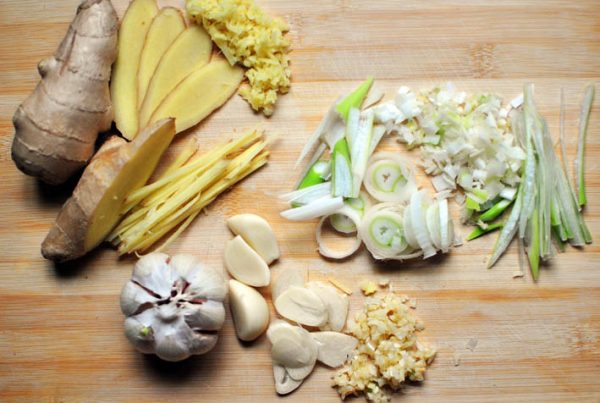
1. Leek (cōng 葱), Ginger (jiāng 姜), Garlic (suàn 蒜)
This holy trinity of aromatics forms the base for most Chinese dishes, whether for soup, steams or stir-fries. Most Chinese dishes use at least two, or all three, items, and so cooks often call them out together like a rhyme (“葱姜蒜!”). The easiest starting point is thinly slicing all three and adding to heated oil; when a fragrance is then released, pop in the rest of your stir fry ingredients. Ginger on its own is wonderful with steamed fish, julienned and added to vinegar for a xiao long bao dipping sauce, and has a plethora of medicinal uses.
2. Soy Sauce (jiàngyóu 酱油)
Did you know that soy sauce is considered to be one of the world’s oldest condiments? Made from fermented soy beans, soy sauce is present across the board in Chinese dishes, with light soy sauce often used in place of salt for flavor, and dark soy used more for coloring.
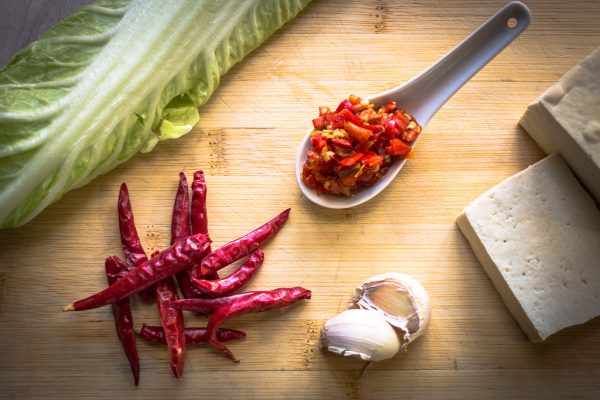
3. Chili Pepper (làjiāo 辣椒)
Whether they’re fried up dry (干辣椒), fresh and thinly sliced, or in a spicy sauce (one of our favourites is Lao Gan Ma, from Sichuan) chili peppers are prevalent in all kinds of dishes across China. Cut dry chilies in half, shake out the seeds, then slice the outer skin into thin ribbons and add to hot oil for a subtle spice in your next stir fry.
4. Vinegar (cù 醋)
There are multiple types of vinegar, but one of our favorites to cook with is Black vinegar, which has an earthy, smoky taste, goes well in soups and stir fries, and can be used as a dipping sauce. White vinegar, on the other hand, is great for Cantonese sweet and sour dishes as well as pickling vegetables.
Shanxi (山西) and Zhejiang (浙江) are famous for their vinegars. A great tasting vinegar to buy that is aged is 老陈醋 (lao chen cu).
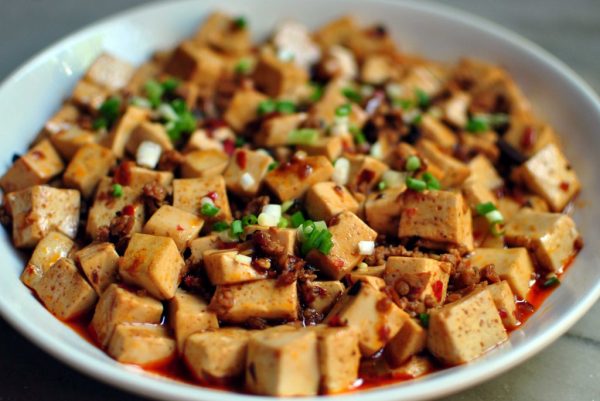
5. Soy Bean Paste (dòubàn jiàng 豆瓣酱)
This salty, spicy paste made from fermented soybeans is particularly prevalent in Sichuan cooking. It can be eaten as is – simply use as a condiment and dip in sliced cucumber or tofu – or can be fried up in a wok as part of a dish, along with meat, vegetable, etc. 豆瓣酱 is a key ingredient in a delicious dish called Mapo Tofu (麻婆豆腐), where it’s simmered in a spicy sauce with Sichuan peppercorns, minced pork and with cubes of tofu.
6. Sesame Oil (máyóu 麻油)
Fragrant and used for taste and aroma in wok dishes as opposed to being used for frying (it has a very low smoke point!), sesame oil has a distinctive flavor. Be sparing when using sesame oil as it can easily overpower other ingredients. We love it drizzled over sliced cucumber and fresh minced garlic.
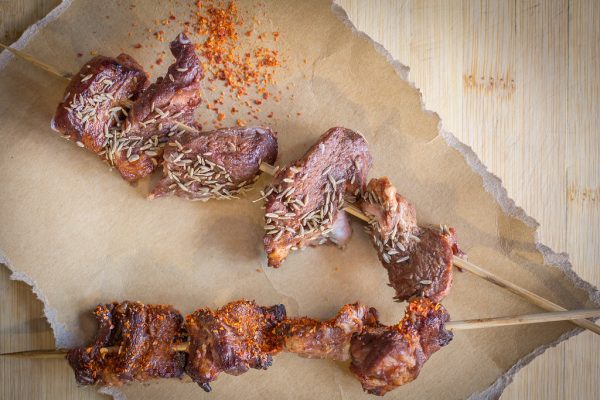
7. Cumin (zī rán 孜然)
Cumin’s distinctive flavor is often found in Muslim-style cuisine hailing from Western China, where it’s frequently used as a rub for lamb and beef. Add whole cumin seeds to hot oil to flavor it before stir-frying a dish, or use ground cumin as a basic seasoning.
8. Star Anise (bājiǎo 八角)
Aniseed – or star anise – has a black liquorice flavor that lends itself well to stews and braised meats, and is a key ingredient in Chinese five-spice powder. Look for whole, unbroken “stars” and keep them well-sealed in a container to maintain freshness.
9. Cassia – Chinese Cinnamon Bark (guìpí 桂皮)
Cassia is the dried bark of a type of evergreen tree, and can be used either whole (looking very much like cinnamon sticks) or in powder form. It’s commonly used in conjunction with star anise for stews and braises, and is an important ingredient in Sichuan hot pot.
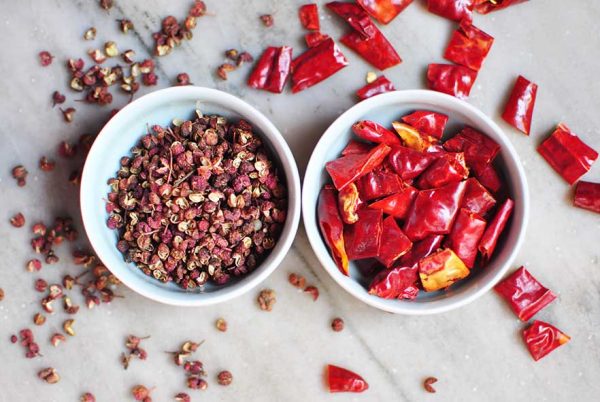
10. Sichuan Peppercorn (huājiāo 花椒)
If you’re familiar with Sichuan cuisine then you’ve certainly encountered the tingling, numbing sensation caused by their local peppercorns. Surprisingly, the Sichuan peppercorn is actually a member of the citrus family. To enjoy their pungent flavor, roast whole peppercorns in a wok, heat up in oil (then remove) to flavor it, or mix finely ground peppercorns with salt for a tasty seasoning or dip for cooked meat!
If you’d like a bit more guidance, and want to learn more about other ingredients in the Chinese kitchen and how to use them:
- Join one of our market tours every Tuesday and Saturday, where our experienced bilingual guides will walk you through one of Beijing’s biggest markets, revealing the secrets behind every day ingredients.
- Demystify the Chinese Kitchen: get your hands dirty in our Essentials class and learn how to chop, taste, and flavour your way into Chinese culinary excellence.
- Write us at info[at]thehutong[dot]com about purchasing one of The Hutong’s Pantry Basics gift baskets, which contains all the right ingredients to get you started in your journey towards mastering Chinese cuisine!











